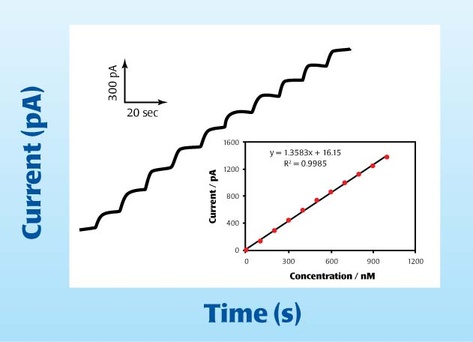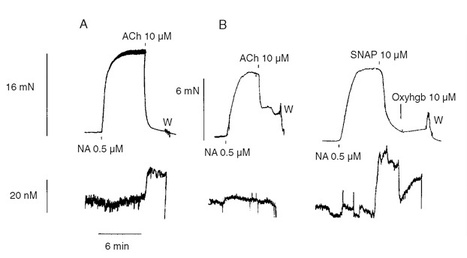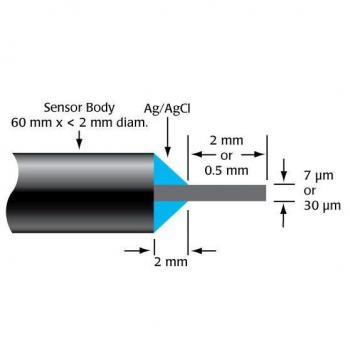ISO-NOP Micro Nitric Oxide Sensors
WPI's nitric oxide microsensors are excellent for measuring NO levels in microvessels.
- Overview
- Specifications
- References
- Links
Outstanding performance 7 and 30 µm sensors that are perfect for tissues and microvessels.
Key Features
- Superior NO selectivity
- Quick reaction time
- Extremely sensitive
- For use with Apollo1000, Apollo4000, TBR4100 and TBR1025
- Requires cable 91580 (sold separate)
- Package of 3
Options
| Order code | Length | Tip Diameter | Shape |
| ISO-NOP007 | 2 mm | 7 µm | Straight |
| ISO-NOPF3005 | 0.5 mm | 30 µm | Straight |
| ISO-NOPF3020 | 2 mm | 30 µm | Straight |
Benefits
- Linear response over a wide dynamic range of NO concentrations
- Dry electrodes don't need sleeves or filler
Applications
- NO measurement in microvessels
The ISO-NOP007 has a 2mm length and a tip diameter of just 7microns. Across a significant dynamic concentration range of NO, the response is linear. The structure is built around a single carbon fiber that has been coated with WPI's NO-selective membrane. This electrode is suitable for application in tissues and microvessels, with a detection limit of about 1nM NO.
The ISO-NOP30 is available in two different tip lengths and has a tip diameter of 30 microns. ISO-NOP3020 has a 2mm tip length, while ISO-NO3005 has a 0.5mm tip length. Across a significant dynamic concentration range of NO, the response is linear. The structure is built around a single carbon fiber that has been coated with WPI's NO-selective membrane. These electrodes are perfect for usage in tissues and microvessels due to their detection limit of around 1 nM NO.

The reaction of an ISO-NOP007 7-m NO sensor to additions of NO (100nM). The calibration plot's linearity is seen in the inset.

Measurement of force (top trace) and changes in NO concentration (lower trace) simultaneously in rat superior mesenteric artery (A) and small human artery (B) under ACh and SNAP relaxation. With only a slight change in force, oxyhaemoglobin (oxyHb) partially counteracted the rise in NO concentration in this artery. [U. Simonsen, et al., J. Physiol., 1999, 516: 271-282.]
The instrument was used in these investigations:
- Vasorelaxation induced by a new naphthoquinone-oxime is mediated by NO-sGC-cGMP pathway.
Dantas, B. P. V, Ribeiro, T. P., Assis, V. L., Furtado, F. F., Assis, K. S., Alves, J. S., ??¦ Braga, V. A.
(2014). Molecules (Basel, Switzerland), 19(7), 9773??“9785.
You can also visit site of the manufacturer.


